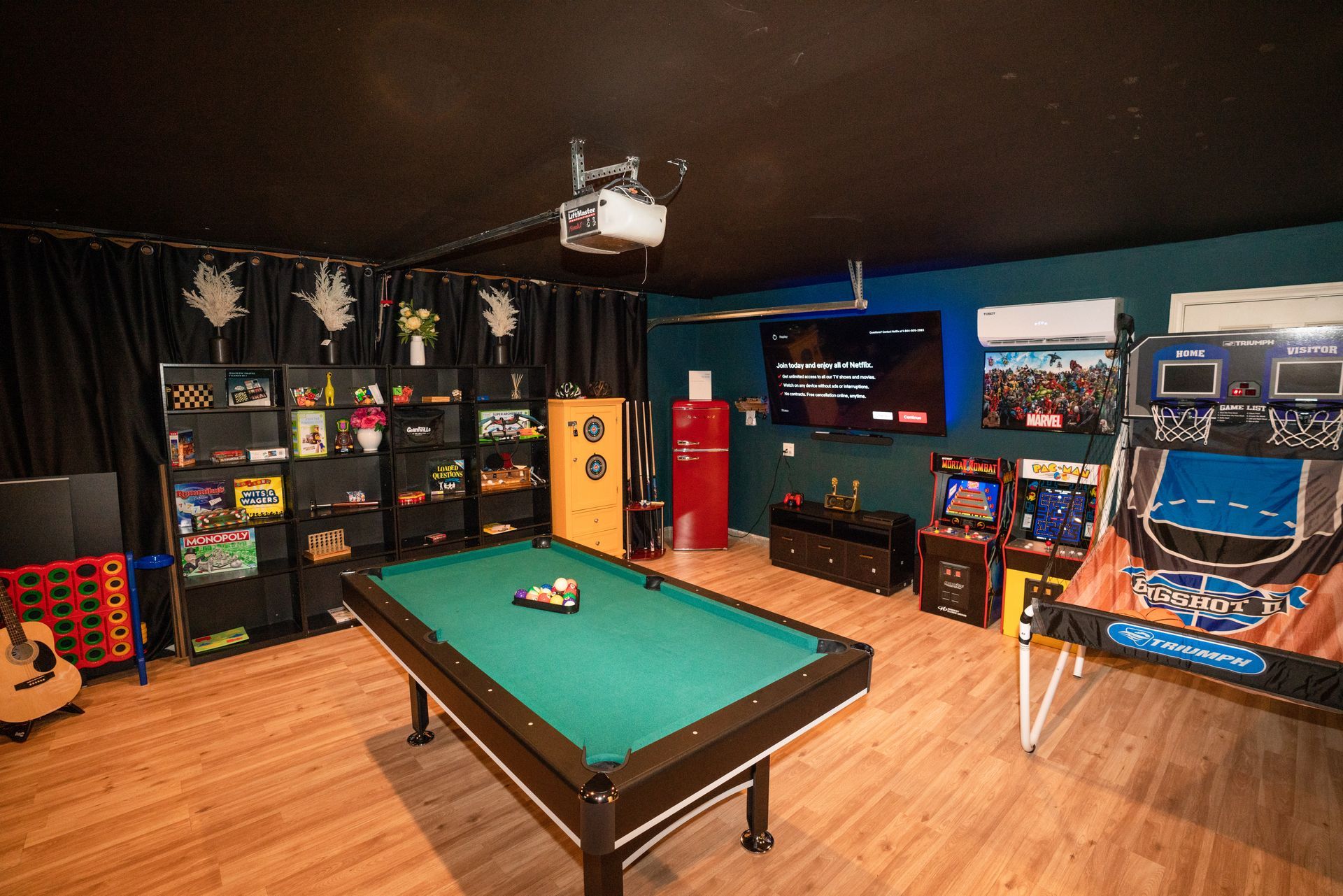How to Value a Vacation Rental Property
How to Value a Vacation Rental Property

Whether you're buying your first short-term rental or expanding an STR portfolio, accurately valuing a vacation rental property is one of the most important steps in the investment process.
Unlike traditional real estate, vacation rentals are income-generating assets that require a nuanced approach to evaluation. In this guide, we break down how to calculate the real worth of a vacation rental using performance metrics, financial formulas, and market data.
Vacation Rental Valuation Methods: Market vs. Income Approach
When learning how to value a vacation rental property, it's essential to understand the two primary valuation methods: market-based and income-based approaches. Each provides unique insights into your property's value depending on your rental goals and exit strategy.
- Market Approach: Compares the subject property to similar vacation rentals recently sold in the same area. Adjustments are made based on features like amenities, location, and size.
- Income Approach: Focuses on the income potential of the property. This is the preferred method for most STR investors since it centers on returns.
Many investors combine both to get a clearer picture of true value.
It's also worth noting that hybrid approaches are becoming more common as STR investors aim to balance appreciation with cash flow. These valuation strategies not only provide insight into the potential purchase price of a vacation rental property, but also play a vital role when seeking financing or preparing to sell.
Key Metrics to Evaluate Vacation Rental Performance
Every property has a performance profile that helps reveal its rental potential. These metrics are essential to evaluate market demand, nightly rate pricing, and projected income.
- Occupancy Rate: Percentage of days the property is rented versus available. A high occupancy rate in your market signals strong demand.
- Average Daily Rate (ADR): The average income per booked night.
- Annual Gross Income: ADR x Occupancy Rate x 365.
- Seasonality: Identify peak and off-peak times to gauge annual fluctuations.
Tools like AirDNA, PriceLabs, or Mashvisor help analyze real-time trends and determine your pricing strategy.
It’s also helpful to look at market trends over time, such as how demand shifts due to seasonality, tourism changes, and economic cycles. This context can help you estimate how many nights your vacation rental property will actually be booked in a year.
How to Calculate Net Operating Income for a Rental Property
Net Operating Income (NOI) is one of the most important figures when valuing a vacation rental property. It shows how much profit remains after covering your rental expenses.
NOI = Annual Rental Income – Operating Expenses
Typical rental expenses include:
- Property taxes
- Insurance
- Utilities
- Management fees
- Maintenance and repairs
- Cleaning services
- Platform (Airbnb/VRBO) fees
Be conservative when estimating expenses—it's better to be pleasantly surprised than caught off guard.
Don’t forget hidden or irregular costs like licensing fees, pest control, furniture replacement, HOA dues, and marketing. Many appraisers and experienced hosts recommend factoring in a maintenance reserve, which is typically 3–5% of gross annual income.
Your net operating income reflects the property's performance before financing. It gives a clean snapshot of how the vacation rental performs based purely on operational factors.
Cap Rate: A Reliable Rental Property Valuation Tool
Cap rate is a standard valuation method used by investors to assess real estate income properties. It helps you compare vacation rental opportunities based on income performance.
The Capitalization Rate (Cap Rate) helps compare multiple properties and markets:
Cap Rate = NOI ÷ Property Purchase Price
- A cap rate of 5–10% is typical for vacation rentals, depending on location.
- Higher cap rates suggest better returns but may come with higher risk.
Cap rate allows investors to normalize performance across markets and price points. For example, a $300,000 property generating $30,000 in NOI has a 10% cap rate, which may be more favorable than a $700,000 property generating $50,000 in NOI.
Be sure to apply cap rate insights in conjunction with your financing plan, since it doesn’t account for mortgage payments or other debt service costs.
Other Vacation Rental Investment Metrics to Know
To fully understand the rental income and return potential of a property, investors use several complementary metrics. These indicators give clarity on both long-term profitability and monthly revenue.
- Cash Flow: The money left over after all expenses (including mortgage) are paid monthly.
- Cash-on-Cash Return: (Annual Pre-tax Cash Flow ÷ Total Cash Invested) Good STRs often yield 8–12%+.
- Rent-to-Value Ratio: (Annual Gross Rent ÷ Purchase Price) Aim for 5%+ to indicate strong rental income relative to cost.
These metrics are especially useful when comparing properties in different pricing tiers or locations. A property with strong rent-to-value but low cash-on-cash may indicate higher upfront costs, while high cash-on-cash but low rent-to-value could suggest higher risk or irregular income.
Some investors also track "monthly revenue per bedroom," which is particularly valuable for multi-bedroom vacation rentals. Others use an income calculator or spreadsheet model to simulate different occupancy scenarios and their effect on ROI.
Using the Adjusted EBITDA Method to Value Vacation Rental Companies
For investors managing multiple vacation rental properties or entire portfolios, business valuation methods are more appropriate. The adjusted EBITDA method is a widely used strategy.
- EBITDA Multiples: Business buyers may use 3x–5x adjusted EBITDA (earnings before interest, taxes, depreciation, amortization).
- Price-Per-Contract: Common in property management acquisitions—each signed property management agreement may be valued independently.
The adjusted EBITDA method helps reflect a business’s operational efficiency and profitability across multiple vacation rentals. It's especially relevant for property managers and STR operators considering mergers, acquisitions, or equity raises.
When using this method, make sure your books are clean and that expenses are categorized clearly. Appraisers will often adjust EBITDA by removing one-time costs or owner's discretionary spending to get a true operational snapshot.
Understand Local Regulations, Risk, and Financing
External factors can significantly impact the rental property's valuation. Always assess the broader environment surrounding your investment.
Valuation must account for external risks:
- STR Regulations: Local laws can restrict or ban vacation rentals, dramatically affecting value.
- Financing Options: Bridge loans, portfolio loans, or DSCR (debt service coverage ratio) loans may influence cash-on-cash returns.
- Vacancy Risk: Seasonality and oversupply in popular markets can impact year-round revenue.
Also consider how competition and zoning affect your rental potential.
Before making a purchase, research the building department and municipality’s policies on short-term rentals. Some properties require permits, inspections, or conditional-use authorizations. In areas with a cap on STR licenses, property value can vary widely based on grandfathered status.
Insurance is another factor. Premiums may be higher for vacation rental homes compared to long-term rentals. Consider specialized STR insurance policies to protect against liability and loss-of-income scenarios.
Planning Your Exit and Long-Term Rental Strategy
Knowing how to value a vacation rental property also involves considering its future flexibility. Whether selling or switching to long-term tenants, value is tied to exit potential.
Consider your long-term play:
- Appreciation potential in growing markets
- Ability to sell as a turnkey STR with established income
- Flexibility to convert to long-term rental if laws change
Evaluating market trends and backup uses will help future-proof your investment property.
You should also think through how your pricing strategy might shift over time. A vacation rental that starts as a mid-tier offering may eventually compete with luxury homes, or vice versa. Staying flexible with furnishings, amenities, and branding can make your property more attractive to a wider buyer pool.
Tools and Income Calculators for Vacation Rental Pricing
Using specialized software can help calculate property value, estimate monthly revenue, and forecast rental income based on local demand.
- AirDNA Rentalizer: Market comps and income projections
- PriceLabs: Dynamic pricing and performance forecasting
- Rabbu: Portfolio-level data analysis
- BiggerPockets Calculators: Cap rate, cash flow, and more
- Mashvisor: Investment property search and ROI tools
These platforms help evaluate similar properties and automate your vacation rental price strategy.
Many of these tools include an income calculator feature that estimates nightly rate, occupancy, and revenue based on nearby rentals. This can help you spot over- or underperforming listings and refine your pricing.
Final Thoughts on Vacation Rental Property Valuation
Learning how to value a vacation rental property is a process of combining data with investor intuition. By evaluating income, expenses, risk, and local market conditions, you can determine your property's true worth.
Whether you're acquiring one home or scaling to multiple rentals, grounding your investment property decisions in data will increase ROI and long-term success.
If you're just getting started, consider working with experienced appraisers, local STR agents, or consulting platforms like AirDNA and Rabbu. And remember—great valuation leads to great decisions.
Share to social media
More posts




